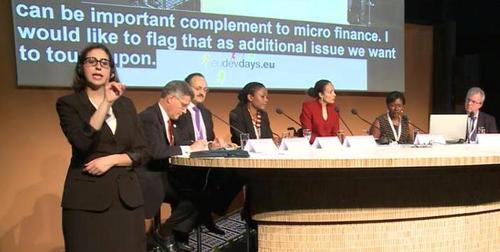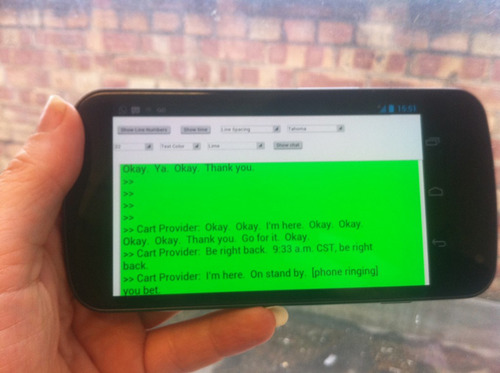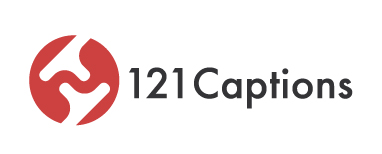Branding
Branding
We were recently fortunate enough do some work with the incredible Tina Lannin from 121 Captions a company run by deaf people for deaf people. After working on the project we really wanted to help spread some awareness of the interesting things she does and how she came to do them…..
I was born profoundly deaf and profoundly stubborn. I’ve always thought nothing was impossible, even though I’ve had so many hearing people tell me “You can’t do that” just because I couldn’t hear.
I always wore two hearing aids, which really only gave me some loud environmental sounds. I was brought up as a hearing person and relied on my ability to lip-read. I accepted my deafness when I was around 20. As my hearing hit rock bottom, I struggled with daily headaches from the stress of communication. Three years ago, I received my first cochlear implant, a year later I received my second. Now I’m bionic, I know what it’s like on both sides of the coin, to be totally deaf and to be hearing – it’s like night and day. Now I understand why hearing people struggle to comprehend deafness, and every day I am stunned at what I can hear.
a) Social attitudes
I am included as far as other people allow me to be. If a group or person are not willing to meet me halfway with communication, I am cut off. Some people talk a mile a minute, others mumble, speak too softly or move around when they speak without consideration for the interpreter or my lipreading skills. I have often been treated like a hearing person and my communication needs have not been met – perhaps because I don’t usually sign and I don’t “look deaf”! I went to a hearing school and was bullied for years by fellow students. I realised that people just didn’t know how to talk to me; they didn’t understand deafness and were afraid to take the first step in communication.
b) Lack of equipment to help me hear.
When I was at university, I did not have any communication support, so I was unable to hear any of my lectures. I worked harder to keep up – I would study every day from 4am to midnight, pester my lecturers with questions, and read all the books on the reading list. Basically I had to teach myself, keep myself motivated, and devise different ways to achieve my targets (such as asking for a written handout for my Japanese oral exam). This technique fell down when I studied post-graduate law, as there were just not enough hours in the day for all the reading required!
Television programmes were not subtitled as I was growing up, so I became an avid reader, which helped my language development. Other social activities were similarly cut off to me – cinemas and DVDs did not have subtitles, social events had no speech-to-text facilities, public transport announcements were made over tannoys and therefore inaccessible. If I can’t see a transcription, I can’t “hear” it.
c) Career opportunities
As access to education and opportunities is compromised, deaf people usually struggle to obtain job interviews, promotion, and high-level work. In my frustration at these barriers, I carried out an experiment after graduation. I sent out six job applications and stated on them that I am deaf. I sent off another six applications and didn’t mention my hearing loss, and included a phone number. I had no response to the first six applications, however the second six applications had employers falling over themselves to interview me and ringing me – until my mother responded by phone and told them I was deaf; they all dropped me like a hot potato. In work, I have in the past been passed over for promotion as employers did not allow me to use Text Relay with their customers. Employers tend to be unable to see past my disability to my ability. I worked as an accountant for many years and found I was treated equally by disability organisations, in contrast to those not in the disability field. Once in work, it is difficult to obtain appropriate support from Access to Work due to ignorance and budget constraints. There is little guidance for deaf people starting out in their careers, and consequently I have helped deaf people get into work through mentoring and careers consultancy, then easing the adjustment process by offering deaf awareness training to their colleagues. I have found that the best way to address these career obstacles is to be self-employed – as I won’t discriminate against myself or my clients!
Ignorance creates fear. A lot of people didn’t know what to do, what to say, how to speak to me. I believe this fear can be overcome by reaching out to hearing people and educating them about deafness, so I obtained a deaf awareness trainer certificate from Signature and a lip reading teacher certificate from ATLA (Association of Teachers of Lipreading to Adults). My deaf awareness courses are practical and hands-on; hearing people are amazed at what they learn about deafness, which really starts to build bridges between the hearing and deaf communities. I have built on these opportunities for education and inclusion by volunteering as a public speaker for Hearing Dogs for Deaf People, writing to young deaf people through Deafax, offering mentoring to Advanced Bionics cochlear implant candidates, and educating people about deafness through my hearing loss blog.
I’ve been lipreading since I could open my eyes; I rely on lipreading because I have always been treated as a hearing person, and I live in a hearing world. I learned sign language when I was around 30, as an additional communication tool when I meet another sign language user. My skills in sign language and lipreading are very useful when I’m in a noisy place and hearing people are shouting at each other “Pardon? I can’t hear you!” but I am able to carry on communicating.
I started in business by offering deaf awareness training and lipreading courses, and mentoring deaf people into work. I have always been passionate about helping other deaf people, as I know from experience how difficult it is to communicate and to cope in a hearing world that doesn’t really understand deafness. I added strings to my bow with forensic lipreading by popping into the London ITN offices to lip-read television news clips and lipreading surveillance tapes for the police.
>Who better to provide such services than a deaf consumer who has years of expertise in using them? We feel it’s important that deaf services can be deaf-led. After all, deaf users are the experts and we understand what works, what doesn’t, who the best service providers are, and we are good at thinking outside the box. It’s so refreshing to work with deaf people who ‘get it’ and can be relied upon to provide high quality communication services in conjunction with important support services – deaf awareness training, mentoring into work, careers consultancy. We have created a social enterprise by creating work for deaf awareness trainers and lipreaders, building up a network of professionals who are just fabulous at what they do. Communication support isn’t just a service. It affects our education, our careers, and ultimately our lives.

Yes. I saw remote speech-to-text being used in Australian schools and in the USA. I thought this way of making speech-to-text accessible over the internet would increase the availability of speech-to-text services in the UK, where there are only around 25 NRCPD-registered (The National Registers of Communication Professionals working with Deaf and Deafblind People) speech-to-text reporters who often have to travel long distances to a client’s venue. In Scotland there are no speech-to-text reporters (STTRs) at all, so a STTR could travel from London to Edinburgh for a short meeting, with travel, expenses and accommodation costs added on top. Remote speech-to-text helps to address the issues of availability and expense by opening up access to STTRs in other countries, working in other languages, working across time zones, in a very cost-effective way – the client only requires an internet connection and a microphone for sound, and we do the rest. I have used this service when I’ve joined a zoo tour and I couldn’t hear the guide – I whipped out my iPhone and his talk was relayed to me on my phone, via captions. Claire and Mike have cochlear implants, they had remote speech-to-text provided at their UK wedding service, with their relatives in New Zealand following in realtime, and the happy couple have the transcript as an unusual memento to keep for years to come. Remote speech-to-text really is ground-breaking and opens up more opportunities for communication, which is good news for businesses and consumers.

Yes, I was asked to lip-read the Royal Wedding ceremony for British Sky Broadcasting. I went to their television studios in west London and I was parked in front of a large television screen to give the team updates throughout the day. It was lovely to be involved in the day in this way, although it was quite nerve-wracking to be lipreading in one-dimension and on the fly! I have been lucky enough to work in different countries such as the Middle East and we get lipreading work from all over the world. Lip reading (or speechreading) is becoming a commercial skill that a deaf person can capitalise on. They are in demand from the print media and TV, where celebrities can be seen but not heard – and everyone wants to know what they say! Forensic lipreaders will lipread CCTV or video footage and deliver a transcript. Expert witness forensic lipreaders will lipread the media then defend the transcript in a courtroom. This is very intensive work as a minute of video footage can take up to an hour to lipread, going over it many times. Lipreading for the media is quite different. At events such as a tennis match, the focus may be on celebrities in the crowd, the lipreader is working on the fly, you may be watching it on TV or actually be at the event itself and only get one try at ‘getting it’. It can be a lot of fun too. Our lipreader Marie was flown to Paris to lipread, in French, the wedding of Prince Albert of Monaco.
My priority is to deliver a quality service at a reasonable cost. If a service is very expensive, this makes it less accessible to society. Everyone, both deaf and hearing, should have access to captions in every part of the community. There are up to 4.2 million CCTV cameras in the UK, about one for every 14 people. As the UK becomes a CCTV society, lip-reading services are increasingly in demand. I believe that people are entitled to equally affordable access to our specialist lip-reading services.
Yes, I do – just like a hearing person. I am Irish and I find Irish and Scottish accents fairly easy. I grew up watching BBC television without subtitles, so I am used to lip-reading Received Pronunciation on television. However, Northern English accents totally throw me off. I find some languages are easier to lip-read – Spanish and Arabic are relatively easy, but Japanese is horrifically difficult!

121 Captions was a finalist in the 2012 Stelios Award for disabled entrepreneurs and we will continue to offer high quality communication support to deaf and hard of hearing people. We plan to add to the number of languages we can offer; we currently offer captioning and subtitling services in over 15 languages. The next step is helping people to subtitle their own videos – watch this space!
You can find out more at the following links www.121captions.com or contact Tina directly at [email protected]


Stay up to date with the latest marketing, web design, and branding tips and news.